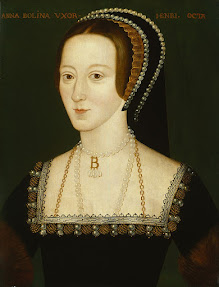The Nordic Animist Year - Rune Hjarnø Rasmussen
Review By Tom
Rating: 9/10
Nordic and Germanic mythology is world renowned for it's incredibly relatable gods and goddess, going on various epic adventures and making seemingly human mistakes along the way. What the mythology doesn't tell is the traditions, rituals and beliefs behind the myths, in the world of the people that believed in them, and how they showed their devotion. To put it simply, the definition of animism is this;
1. The attribution of a living soul to plants, inanimate objects, and natural phenomena.
2. The belief in a supernatural power that organizes and animates the material universe.
Animism is a very old concept and belief and Dr. Rune Hjarnø Rasmussen puts this idea into a modern and contemporary context, so that modern people can understand its fundamentals and how we can use it to build a better world for the future. Stemming from the deep respect for the very much living environment around you, animism can help you gain a new perspective about how you interact with and see the world. My first brush with this concept came when watching videos by Einar Selvik of Wardruna telling me about the concepts behind Wardruna's music and how deeply engrained the idea of being at one with nature is within the songs. This book has built upon that, and has opened up a whole new level of understanding the people in which I love to study. Using a variety of sources from the Nordic cultures alongside various others (including English, Celtic and African) Rune builds up a comprehensive picture of belief and ritual.
Using the format of an adjusted runic calendar Rune takes you through the year from an animist perspective and tells you what to expect on specific dates, as well as explaining how their origins link with the present. The biggest surprise for me is how much of the research is built upon Christianity, Rune explains that the coopting of animist traditions are our best source to look at the significant days in the animist year. These days were often changed to Saint's days (St. Cnut and St. Steffan for example), and the link between the two phenomena are explained exquisitely. Alongside this Rune delves into the magic of the Seiðr, (the practice of seiðr is believed to be a form of magic relating to both the telling and shaping of the future) and how could only be done on specific days at a specific time of year.
I haven't been this engrossed in a book for a long time, and the fact that Rune explores such a wide range of sources makes each small segment more fascinating than the last. Learning about lunar and solar calendar cycles and astrological calculations originating in myths, for a short book it has an encyclopedic knowledge contained with in its pages. Whilst some areas I wish were explained further, more specifically the specific taboos around certain festivals and sacred days, I was blown away at how concise and articulate the book was. The most fascinating parts for me was reading about how festivals and events at opposite ends of the year linked to create a full circle of life and ritual.
I can't truly explain the quality of this book as I have developed such a great admiration for Rune's work throughout the reading process. The best part is a lot of what is contained can be interpreted differently by different people, but I think it is a definite must read for anyone looking to find out more about the heathen practices, rituals and beliefs outside the epic mythology of the Nordic countries. It will also help you look at the world through old, ancient eyes, and develop a new understanding of the living and breathing world around you.






Comments
Post a Comment